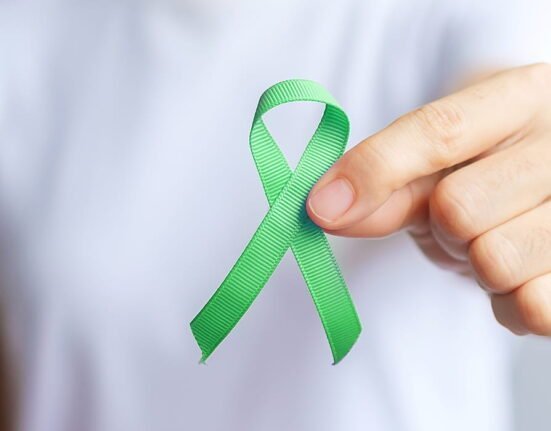Falling in love is one of the most beautiful human experiences that inspires individuals to make art and poetry and understand the crux of human existence. But is falling in love just an entirely emotional state, or is there any science that explains what happens when individuals fall in love? This article delves into the psychology of falling in love that will highlight the neuroscience behind this profound human experience.
What is it like to fall in love?
Though it might sound highly poetic and artistically pleasing if put into words, the sensation of love provokes a variety of psychological, behavioral, and physiological alterations in an individual. Individuals usually say that a racing heart is the most prevalent indicator of love. The person feels the rapid heartbeat because the body secretes adrenaline, causing the heart to beat faster.
It is also generally observed that lovers tend to get thoughts about the person they are in love with, thus showing excitement or agitation while dozing off. Variations in the sleep cycle or disturbed sleep patterns are experienced among people who fall in love. Attraction to a person may also generate excitement and sexual arousal, hence more significant sweating and enlargement of pupils. You will usually find people in love daydreaming about their lover’s mind, which interferes with their concentration and power to focus on everyday activities. Lovers are also seen to idealize one another by perceiving each other through rose-tinted spectacles that favorably alter their understanding of the other’s behavior, ignoring their imperfections. There is a sense of heightened emotions among couples where small gestures, words, or moments with the partner feel highly meaningful and emotional to one another due to increased emotional sensitivity.
There is a willingness to spend more time with the one you love, and reaching out more frequently is done by calling them, texting, or meeting out. There is a more incredible urge for communication whereby individuals find opportunities for intense and meaningful interactions to build emotional closeness. Among the shared tendencies are putting one another’s needs first, loving the person, and caring for them.
Theories associated with Psychology of Love
Sternberg’s Theory of Love
Robert Sternberg proposed one of the most widespread psychological frameworks for understanding love. According to Sternberg’s Triangular Theory of Love, there are various attitudes toward love. The three aspects are as follows:
- Intimacy – It describes the profound sense of connection, closeness, or nearness that people share, rooted in sharing personal experiences, ideas, and mutual comprehension.
- Passion – It describes the powerful feelings of bodily desire or erotic lusts awakened during the beginning stages of an erotic love affair, delivering a sensor of emotional thrills and ecstasy.
- Commitment – The desire to continue and work towards holding on to a relationship. It is necessary for building certainty in the future and is seen as a key component in the mature phases of a relationship.
Combinations of these three factors can explain different types of love. A person experiences “infatuation” for another individual in the context of passion but without commitment or intimacy. Commitment and intimacy lead to “companionship” without passion. Sternberg’s theory pointed out the intensely stable and long-lasting “consummate love” relationship with passion, intimacy, and commitment. This is the most complete type of love.
Read More: Understanding the Triangular Theory of Love
Bowlby’s Attachment Theory
John Bowlby formulated the Attachment Theory, later developed by Mary Ainsworth. It focused on how early childhood interactions with primary caregivers shape a person’s adult romantic relationships. It also proposed that how people form emotional attachments in childhood shapes how they deal with trust and intimacy in their adult relationships.
This attachment style is characterized by security and comfort in an intimate relationship with the partner. Individuals with this attachment style tend to maintain healthy, productive relationships. They are secure in their emotional relationships with others able to express their feelings and needs in a balanced way.
Avoidant attachment individuals are afraid of intimacy and closeness. They typically struggle with opening up and, either consciously or unconsciously, emotionally distance themselves from their partners. This will most likely be problematic in establishing deep emotional relationships and sustaining long-term relationships.
Anxious attachment involves a strong desire for attachment and closeness, often combined with the fear of rejection. As a result of this attachment behavior, one becomes overly clingy to their beloved and is also obsessed with losing them, thus emotional distress and insecurity within relationships.
One’s attachment style typically explains how one will be in a relationship, how he or she will react to conflicts, and how invested one can become with another on an emotional level. Knowing the attachment style that explains a person might be the beginning of understanding romantic relationship dynamics and the nature of love itself.
Read more- Exploring Human Connection: A Look at Attachment Theory
The Mere Exposure Effect
Mere Exposure Effect is a psychological principle which suggests that individuals are attracted to those or those things whom/which they come across daily. This leads us to think that individuals who live together will surely fall in love with each other. The idea here is that familiarity results in affection. Individuals get a feeling of being secure and feeling their presence as and when they keep on being exposed to the same individual regularly. With time, familiarity creates affection and attraction towards each other. The Mere Exposure Effect usually occurs in individuals who collaborate, in long-term friendships, and in arranged marriages, where people draw closer to each other as years pass by because of proximity, intimate relationships, and familiarity.
Read More: Mere Exposure Effect in Psychology
The Love Styles Theory
John Lee’s Theory of Love Styles, also known as “The Colors of Love,” identifies love into six styles based on one’s personality and behavior. Lee’s theory highlighted that one’s needs and desires influence how people fall in love. The six various ways are as follows:
Eros is romantic and passionate love with overpowering emotional desire and excitement. It is a more intense emotional connection and pure attraction towards the partner.
Ludus conveys a free-spirited and casual attitude towards love. Individuals with Ludus’ love type are less committed, like the feelings of flirting with one another, and engage in casual relationships rather than emotional intimacy.
Storge is companionate love that involves mutual respect, trust, and emotional support. Pragma is a practical and rational type of love in which the individual enters into a relationship anticipating compatibility and shared values. People who like Pragma love usually choose relationships based on rational considerations and not emotional connections.
Mania is possessive love, where one becomes possessive, jealous, and overly needy of their partners for validation. Mania will bring about unhealthy patterns of behavior, such as emotional instability and anxiety.
Agape is selfless, unconditional love, usually for the sake of others’ welfare. Agape lovers are altruistic, prioritizing their partner’s needs over their own and giving emotional support without expecting reciprocation.
These styles of love help to identify the diversity in love life, help to identify the patterns in their relationship, and better deal with their emotional needs.
Neuroscience of Falling in Love
When people fall in love, the brain processes are significantly influenced by the release of numerous chemical neurotransmitters and hormones. Psychological and physiological influences that affect how a human brain develops exist. The neurochemicals that are released in the brain system influence the manner in which one thinks, feels, and acts in a love relationship. The chemicals influence the development of early passionate phases of love and deeper, longer-lasting intimate relationships.
Dopamine
Dopamine also goes by the name of the “feel good” hormone due to its importance in creating a sense of reward and pleasure. Dopamine is responsible for the sense of euphoria and excitement experienced in the initial phase of romantic attraction when one is in love with someone. Dopamine prompts the reward system of the brain since it boosts the action that draws you closer to the person you like. The brain hungers for the pleasure sensation that follows due to a love relationship, and a person will be really interested in expecting pleasure, creating an affirmative positive feedback system of love.
Oxytocin
It is also referred to as the “bonding hormone,” which has a major role in creating emotional bonds. With physical intimacy, like hugging, kissing, and sex, there is more oxytocin that encourages attachment, trust, and love. Oxytocin release is crucial to encourage attachment feelings, comfort, emotional support, and safety in creating emotional bonds.
Vasopressin
Vasopressin has a very important function in sustaining long-term love and commitment and attachment. Vasopressin controls a person’s behavior to commit to and have a long-term monogamy, for example, to maintain exclusivity and become attached to each other.
Serotonin
During the early stages of love, the level of serotonin is responsible for preoccupation and obsessions about the beloved. The boost in serotonin comes along with the sense of stability and peace in a long-term relationship that smooth out the ups and downs of emotions.
Brain Regions Involved in Love
Ventral Tegmental Area: It is part of the brain within the brainstem that is responsible for enhancing reward-seeking behavior and is activated when individuals feel pleasure or reward. Dopamine is released, and hence an individual feels strongly motivated to seek romantic relationships, which is why falling in love results in a pleasing feeling.
Caudate Nucleus: It is essential to support goal-directed actions that bring individuals closer to one another and enable them to build close relationships. That is why people cultivate love languages such as quality time spent together, physical touch, gift-giving, and service.
Prefrontal Cortex: Prefrontal cortex supports executive functions such as judgment, decision-making, logical thinking, and learning. The study has predicted that during the initial stages of love, less brain activity is provided to the prefrontal cortex. That is why newcomers in fresh emerging relationships do stupid things to get involved in less rational and more random behaviors. The emotional high achieved through feelings of being in love overwhelms one’s rational mind for some time, which is controlled by the prefrontal cortex.
Some Interesting Facts about Love
- Being in love is the same as taking addictive drugs such as cocaine in activating brain areas.
- Experiments indicate that gazing at the image of the beloved can actually diminish bodily pain because love activates the reward system in the brain.
- The initial stages of romantic love can lower serotonin and raise cortisol, which cause insomnia and restlessness.
- Varying chemicals in the brain produce lust, attraction, and attachment. Testosterone and estrogen power lust, dopamine and norepinephrine drive attraction, and oxytocin and vasopressin create attachment.
- Eyes get dilated as people are drawn to each other, an automatic sign of stimulation and interest.
Conclusion
Falling in love is more than a mood—it’s a multifaceted neurological process that engages multiple hormones, neurotransmitters, and brain regions. From the initial excitement and rush brought on by dopamine to the deeper and longer-lasting attachment facilitated by oxytocin and vasopressin, love shapes our moods, behaviors, and mental health. Learning about the biology of love increases our respect for its tremendous power and prepares us to create and sustain secure, healthy, fulfilling relationships.
Read more: Love Addiction: The Fine Line Between Passion and Obsession
References +
- Acker, M., & Davis, M. H. (1992). Intimacy, passion and commitment in adult romantic relationships: A test of the triangular Theory of love. Journal of Social and Personal Relationships, 9(1), 21–50. https://doi.org/10.1177/0265407592091002
- Brogaard, B. (2019). Love in contemporary Psychology and Neuroscience. In Routledge eBooks (pp. 465–478). https://doi.org/10.4324/9781315645209-39
- Gimenez, M. E., & Giddens, A. (1993). The transformation of intimacy: sexuality, love and eroticism in modern societies. Social Forces, 72(1), 271. https://doi.org/10.2307/2580173
- Hazan, C., & Shaver, P. (1987). Romantic love conceptualized as an attachment process. Journal of Personality and Social Psychology, 52(3), 511–524. https://doi.org/10.1037/0022-3514.52.3.511
- Simpson, J. A., & Rholes, W. S. (1998). Attachment theory and close relationships. Choice Reviews Online, 35(11), 35–6513. https://doi.org/10.5860/choice.35-6513
- Sternberg, R. J. (1986). A triangular theory of love. Psychological Review, 93(2), 119–135. https://doi.org/10.1037/0033-295x.93.2.119













Leave feedback about this